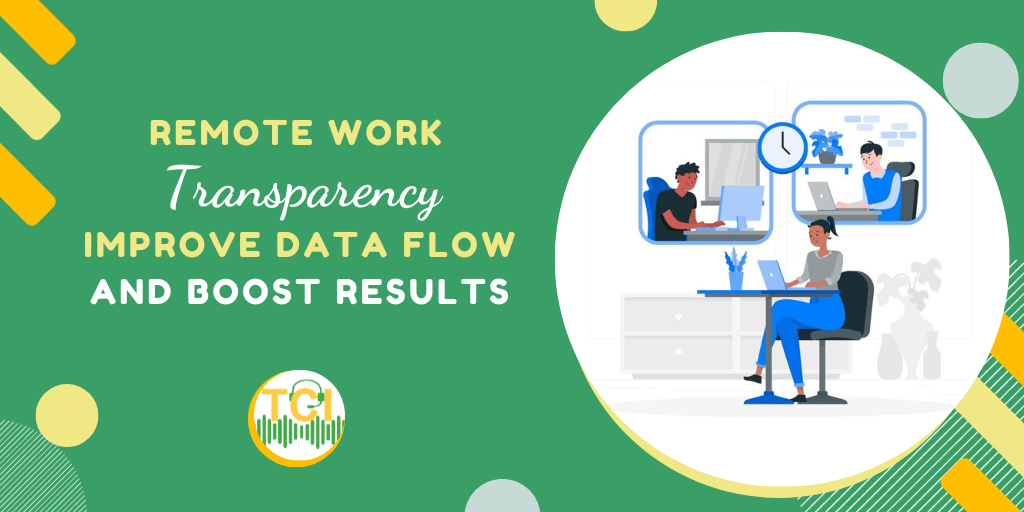
Some of the recent data surveys show that about 12.7% of people work full-time as remote employees, while as many as 28.2% work a hybrid model. This is why no enterprise can afford to ignore the importance of remote work anymore.
While the traditional office has many problems and downsides, it’s a concept that had decades (in a way, even centuries) to evolve. It was designed for optimal productivity, and for each of its flaws, it offered many solutions to common productivity and structural challenges.
Fortunately, with just a bit of strategy and better transparency, data flow and overall effectiveness in remote work teams can surpass their conventional counterparts. Here are some tips to help you achieve this in your organization.
In theory, smaller teams could run their business through chats and email file sharing. This, however, is not the right way to go. Instead, you must pick the right project management software and utilize it to your benefit.
First, this will ensure a much higher transparency. Regardless of what you pick (Monday, Trello, or Basecamp), you’ll have boards and projects that will be visible to everyone involved. This usually gives you a graphic representation (to-do lists, color-coded task stages, etc.) of what’s happening and makes it easier for everyone to follow.
Access control (which we’ve already mentioned) is a key part of every team’s cybersecurity. On a project management platform, this process is streamlined and simplified.
Another thing you need to keep in mind is the importance of a digital footprint. This is vital regarding version control, establishing accountability, and responsibility. When changes are made, you need to know when and by whom. You also need a quick way to revert to the previous version of the file, which would be impossible without it. The right project management software can make this possible.
Archiving old tasks ensures that no data is ever truly lost. You would be surprised at how often you’ll need to take a look at the project you completed months ago. Having a way to get this task on demand is essential for the consistency of your brand’s performance.
With the right process mining platform, you can get a much better insight into how the work is done. This helps you identify bottlenecks and inefficiencies and point out these problems to your team. Most of the time, the problem starts with your team being unaware that a problem even exists.
The analysis of event logs and data generated during remote work can be analyzed via process mining, which allows your organization to track this data as it moves through various systems. This makes the process known to the organization, which can then decide on the level of transparency they’re comfortable with.
Evaluating performance is also harder than it looks. The more complex the project is, the more room there is for downtime, even by some of your most capable members. This way, you can get a much higher insight into what went wrong and get a chance to give your team more accurate feedback.
One thing that ruins the relationship with your team the quickest is that you’re accusing them of failing when they’re doing their best (which could happen for many reasons). This results in demotivation for work, higher talent abandonment rates, and many other unpleasantries. With the help of a deeper understanding, you can easily avoid such scenarios.
Most importantly, you get access to the root cause analysis. This allows you to treat the root of each problem, not just mend the symptoms. This inevitably leads to a much better process optimization, which is the goal all the teams strive for.
In theory, working from home is supposed to be more relaxing and comfortable than office work. After all, an employee gets to avoid traffic jams and office noise and can work from their own home (usually even enjoying flexible working hours).
However, many people get lost without a strict office work structure. This makes them overworked and anxious. They won’t get the feeling of camaraderie that they would get from working in the office (we’ll return to this point later in the post), and they’ll never get the feeling that they’re truly off-work.
This is why the importance of self-care for remote workers cannot be stressed enough.
First of all, your employees are there for the long run. Overworking them and making them neglect their personal life won’t benefit you in the short run. Sure, you’ll get a few extra working hours from them, but this will come at the cost of worse decision-making, more mistakes, and lower quality of work, in general. Moreover, the extra anxiety and mental health toll will make them leave your employ much sooner.
In other words, emphasizing their health and well-being more is not just an ethical choice; it’s a smart thing to do.
One hidden transparency boost you haven’t thought of is better time management. Knowing exactly how much each team member can work optimally will help set realistic standards for the rest of your team. This way, your staff members won’t worry about their colleagues outshining them just before the next review.
One of the biggest downsides of a traditional workplace is that, while the entire team is laboring toward the goal, most of them don’t see the light at the end of the line. They have no idea how far they’ve progressed or if they’re making any progress. By sharing this, you can remind your team that their work matters and show them concrete results.
These updates go both ways. As an employer, most of the time, you’re unaware of the progress that each individual makes regularly. This is especially in line with Parkinson’s law in project management, where most people idle until the deadline is near (sometimes even too near). By insisting on regular updates (usually in the form of reports), you can circumvent this problem by giving your employees shorter, regular deadlines. This way, they’ll have to show what they’ve done daily and weekly, which will keep them more productive.
Another thing you need to keep in mind is that, through modern employee monitoring platforms and project management tools, you have a way of monitoring their productivity in real-time. Sure, some may say this destroys the trust between a leader and their subordinates (who feel watched all the time), but there’s a way around this, too. Just use these tools in moderation and be transparent about how this works.
Just remember that, with the majority of problems, they’re insignificant if they’re resolved in time. These tools will allow you to spot them a lot earlier than you would usually be able to.
While data flow sounds like a system-driven process, the truth is that it completely depends on your team (its human elements). This is why, with better team relationships, you’ll get far superior communication. Now, many enterprises organize these team-building events in person, but there’s no reason why this should be the case. You can just as easily organize these events online.
You can start with something as simple as the so-called virtual ice-breakers. These are the meetings where you will introduce your team members and mediate to facilitate this introduction stage. Sharing a few things about themselves, followed by a quick online trivia or quiz game, can help set the tone.
Then, you have so many options not exclusive to the real world. You can start a book or a movie club. You’re probably already organizing virtual workshops, so why not get one more oriented toward strengthening team unity? You can also be more creative and host an online escape room or a multiplayer video game session. Each of these can give you some admirable results.
Besides boosting employee engagement and reducing misunderstanding, you’ll also create an environment with shared goals and objectives. This requires trust and transparency, which won’t always come from within the group. Sometimes, as a leader, you must try to drive this change.
Lastly, remember that when team members develop a feeling of loyalty toward their team members (and, by proxy, to your brand), this will lead to much higher accountability.
Remote work is a problem you must solve if you plan to run a business in 2023/2024. While the number of people working from home is already quite impressive, these numbers will only increase in the following years. So, the sooner you have these things worked out, the better. With our tips, you should have no trouble utilizing data better and increasing your workplace transparency. The specific steps, however, are up to you and the needs of your business.
Your TRANSCRIPTION CAREER CAPSULE to Help You BOOST Your Potential
Latest Industry News, Jobs, Tips and More..

Comments are closed